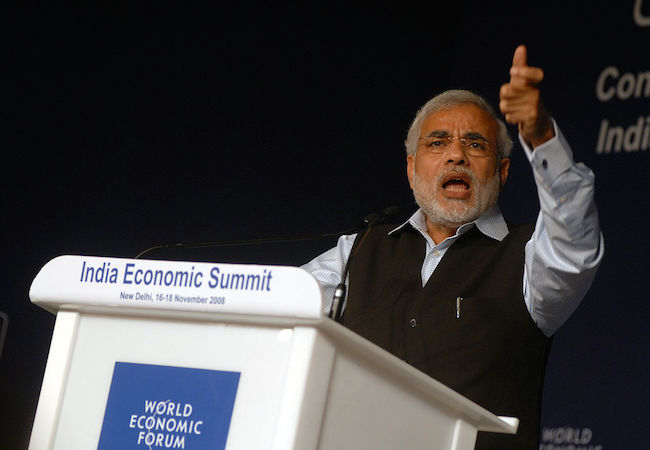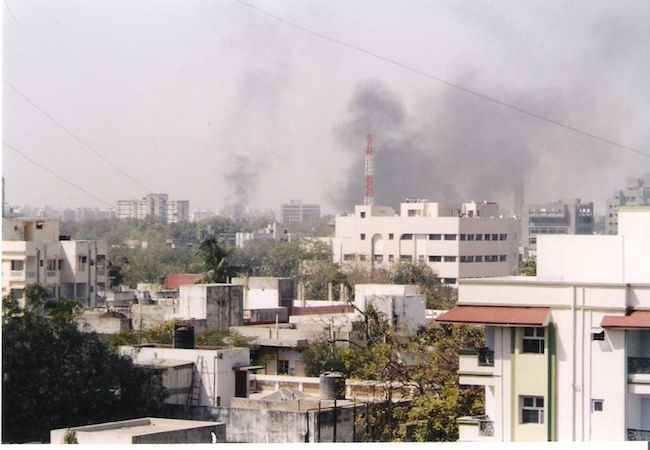Hindutva’s revival and South Asian stability

By Nidaa Shahid
Would Hindutva’s revival stabilise South Asia? Like Indus civilization, Hinduism has pervaded a major chunk of the subcontinent for several millennia and is now perceived to be Indian civilization. Present day Indians are reclaiming their civilizational aspect that they consider used to be the centre of a great mix of cultures and fountain of power. There is some degree of myth and fact in that claim. Nationalism is a positive ambition until it starts affecting peace sought by others. The world is still recovering from the aftershocks of Nazism and how the sense of racial superiority let to war and instability in the world.
The culture of present day India has evolved over five millennia and some of the beliefs in Hinduism are mythical, which is perfectly understandable because religious beliefs are sacrosanct and are not subject to empiricism. It is safe to respect and stay away from testing the mythical aspects of the religions until these begin impacting the peace and amity with others. New Delhi claims that India is punching below its weight and deserved status that is part of its historical moorings, geography, culture and civilization, which is five thousand years old.
Prestige struck, some hyper-nationalists recoil from the lost millennia of Muslim rule over subcontinent that led to British Raj and ended with emergence of two independent States. Revival of the lost power that was moth-eaten by the Aryans, Mughals, British and other invading forces is a top Indian agenda. Desire for a more prominent status in the world politics, combined with rising economy, lure of Indian market in the West, the lure of Bollywood, soft power, history, realpolitik and above all shift from secularism to a particular brand of religiosity are what embody modern-day Hindutva.
The term Hindutva was coined in the 1920s but it has been a part of the Hindu culture for over a millennia. It basically refers to the concept of Hindu nationalism, of being a Hindu not just in words but also in spirit. The Indians take their nationalism very seriously. The Bhartiya Janata Party has always been a strong advocate of this movement and this has manifested in awkward ways like pogroms against Muslim minority in Gujarat in 2002, the Babri Mosque incident in 1992, the latest reports of forced conversions of minorities and reported changes in school syllabus to suit a certain brand of religion.
Hindutva has resurged since BJP’s rise to power in 2013 and Mr Narindra Modi’s election as the Prime Minister. Mr Modi and his select team are strong proponents of this notion and have gone so far that Moditva may replace the old term. It’s a strange blend of saphronisation of India ensconced in liberal outlook and lure of economic incentives for Western defence industries jostling in haste for Indian markets. Some interesting developments of pursuit of Hindutva have either been lost in the din or overlooked.
Some responsible officials have recently claimed ancient Indian technological advancement and superiority in advanced weapons systems thousands of years before rest of the human race was grappling with basic sciences. Chief Minister of Uttarakhand, Ramesh Pokhriyal, claimed that India had conducted nuclear tests centuries ago. Next, the archaeologists may accidently find their lost thermonuclear weapons and intercontinental ballistic missiles, alleviating pressure on DRDO and the Western exporters keen for selling uranium to New Delhi. Likewise, Sudershan Rao – the head of the Indian Council of Historical Research – claimed that Indians were flying aeroplanes, carrying out stem cell research and may even have been using cosmic weapons 5,000 years ago! One wonders if copyright claims and international lawsuits will follow these fabulous claims.
These claims to lost fame can be ignored but other dangerous developments cannot. India may be losing its hard earned position as a liberal and secular country if the trend of forced conversions of Muslims to Hinduism continues. Hindu activists refer these as ‘homecomings’, reflecting their goal of purging India of foreign religions brought by invading armies over the centuries. There is little voice against this revivalism, which means there maybe silent acceptability within the opponents of BJP. Moditva – or let’s stick to Hindutva – has internal and external motivations.
Internally, the BJP is delivering on its promises to its electorate and winning more public support for its tough policies. After all, religion has historically been one of the best vehicles for promoting political ends. Nothing motivates the public as much as nationalism and religion and the BJP successfully uses it to political advantage.

Externally, Hindutva and fantastic claims of technological superiority are efforts to portray India as a powerful state and its people as capable of handling much more power than what the country currently has. Economic revival and large market are particularly helpful as seen in the conclusion of recent deals, which India has made with several countries for nuclear trade even though it is in clear violation of the international non-proliferation norms. This is accompanied with military modernization that has increased manifolds.
India’s net interest lies in measuring up to the myths of being the possessor of cutting edge technologies once the developed world was in dark ages and only it was shining. Nuclear Suppliers Group and other export control arrangements, however, sit as the gatekeepers to the cutting edge technologies that India wants to ‘reclaim’. Technological superiority, military power and economic muscle may finally help it win a permanent seat in the UN Security Council.
Hindutva has its ills and consequences for South Asia. Pakistan is India’s 70-year old rival and thousands of years old albeit more peaceful Indus civilisation that it represents. Indus is distinct from Ganges-based Hindu civilization although Pakistanis have not worked hard to sell this fact. Islamabad and New Delhi have some unfinished business since their 1947 independence from British Raj. Their unresolved territorial claims have been source of wars, instability and militarisation of the subcontinent. India’s swift drift towards Hindutva and increasing military power will be consequential.
Military modernization and its religious justification would potentially disturb the regional strategic equilibrium and exacerbate security dilemmas, forcing Pakistan to keep a minimal level of deterrence in conventional and nuclear domains. But the global ambitions and long-range weapons with intercontinental reach would affect military calculus of other powers very soon, even if the economic imperatives were very sanguine.
Stability in South Asia and beyond hinges on delicate factors and growing Western defence cooperation feeds into Hindutva, pushing the stability to a precipice. It will be difficult for India to spin out of this dangerous trend and perhaps its newfound friends can help it stabilise its ambitions and regain strategic stability.




